The beautiful state Uttarakhand is a Himalayan state of North India renowned as the Land of Gods. This destination beautifully flaunts its scenic beauty and also exhibits the cultural ethos that speaks of a harmonic coexistence with nature. Uttarakhand is truly a famous pilgrimage site as it is the originating spot of the two most holy rivers for Hindus- river Ganga and river Yamuna. It is home to the famous sacred Chardham. Numerous pilgrims pay a visit to Chardham every year.
There are top-most places to explore in Uttarakhand that surely makes one’s vacation a surreal one- Nainital- is a charming hill station nestled in the Kumaon region, Mussoorie- one of the famous hill station located in the Dehradun district of Uttarakhand, Dehradun- winter capital of Uttarkhand, Dehradun boast of a picturesque backdrop of the Garhwal Himalayas, Rishikesh- nestled in the foothills of the Himalayas along with the convergence of Ganga and Chadrabhaga river, Rishikesh is a small town in Dehradun. It is renowned for adventure activities and yes of course for holding pretty ancient temples too, Haridwar- an ancient city nestled on the banks of river Ganga and is renowned for holding numerous Hindu temples, Valley of Flowers - situated in the Chamoli district and is a picturesque national park, Jim Corbett National Park- is the oldest national part set amidst the foothills of the Himalayas in the Nainital district of Uttarakhand. There are other places too that are worth visiting during your trip to Uttarakhand.
The aptest time to explore this stunning destination is between March to April and mid-September to mid-October. During the summer season get to indulge in trekking, paragliding and yes take a tour to Chardham of Uttarkhand. Enjoy river rafting from November through February as it is the best time for rafting in Rishikesh. One can even head towards Jim Corbett National park and witness wildlife. Places like Mussoorie, Nainital experiences snowfall in winter so one can head towards the hill stations to enjoy snowfall. Avoid the monsoon season that is in July and August as this is not apt for sightseeing but yes during the monsoon season Valley of Flowers is truly picture perfect during this particular season.
What is Panch Kedar
Panch Kedar is a set of five Hindu temples- - Kedarnath, Tungnath, Rudranath, Madhyamaheshwar, and Kalpeshwar all devoted to Lord Shiva. Panch Kedar is nestled in the Garhwal Himalayan region in a beautiful state, Uttarakhand. As per Mahabharata when Pandavas were in a search of Lord Shiva, Lord Shiva turned himself into a bull to avoid detection and when Bheem tried to capture the bull, the bull disappeared and later reappeared in body parts, the hump reappeared at Kedarnath, the arms appeared in Tungnath, the naval appeared in Madhyamaheshwar, and the face showed up at Rudrnath and the hair and head appeared in Kalpeshwar. The Pandavas then built temples at these five places to worship Lord shiva.
Each temple is located in the most serene parts of the Indian Himalayas. The village of Kedarnath is on the edge of the Kedarnath mountain slope in a remote northern part of the Garhwal Himalayas. One can witness the Dudhganga, Madhuganga, Swargaduari and Saraswathi stream flowing in the valley behind the Kedarnath temple. Tungnath has truly an amazing backdrop of the peaks of Panchachuli, Nanda Devi, Dunagiri, Kedarnath, and Bandar Poonch and is nestled near Chopta that is at a very short distance from Ukhimath. Kalpeshwar is located in the Urgam valley in a very dense forest area. The stunning Urgam valley has apple orchards, terraced fields where potato is grown extensively. The Kalp Ganga river, a tributary of the Alaknanda flows through this pretty valley.
One going for a Panch Kedar yatra has to cover a long and serene journey. The journey is filled with the element of sacredness, meadows, mountains, snow-covered peaks, wildlife and streams. This yatra takes around 15-16 days to complete. The Panch Kedar trek is also famous among trekkers who like the thrill of trekking to the holy places perched in the mountains. Enjoy the serenity and beauty of the high altitude meadows of Rudranath, Panar and Chopta and also enjoy camping under the open sky amidst the pretty landscape.
The mythology behind Panch Kedar temples
As per the Mahabharata, Pandavas defeated and killed their cousins, Kauravas in the war and left in search of Lord Shiva to seek his blessings, Lord Shiva then disguised himself as a bull. Pandavas saw a bull grazing near Guptakashi, Bheema recognised the bull to be Shiva and caught the bull by its tail, but it dived in the ground and vanished. After this Lord Shiva reappeared in parts at different locations- hump came up at Kedarnath, the arms appeared in Tungnath, navel appeared at Madhyamaheshwar, a face emerged at Rudranath, arms appeared at Tungnath, and hair at Kalpeshwar.
The Pandavas after this constructed temples at these five places for worshipping Lord Shiva. After constricting Panch Kedar Pandavas meditated at Kedarantha for salvation and performed Yagna and then attained salvation.
Panch Kedar Temples-
1. Kedarnath
Kedarnath temple is one of the Chardham and is nestled in the Rudraprayag district of Uttarakhand state. It is one of the most religious Dhams in India and is situated at a good height of 3584 m above sea level near the head of the Mandakini river. The holy Kedarnath temple is devoted to lord shiva. Here the grand structure of lord shiva’s shrine is built of grey stone.
One can witness here the stunning views of snowy-peaks, alpine meadows, and delightful forests of rhododendrons. One can witness the large stone statue of Nandi Bull staring at the shrine, guarding it. The temple has one Garbha Griha that houses the primary idol of Lord shiva. The Mandapa section of the shrine has the idols of Lord Krishna, Pandavas, Draupadi and Kunti. The nearest motorable road towards this temple is Gaurikund. After which one needs to trek for about 14kms to reach the temple.
One can even avail the ponies and palanquins facility to reach the shrine. Helicopter service is also available.
2. Tungnath
The highest temple of Lord Shiva, Tugnath lies at a height of 3680 meters nestled in the Rudraprayag district of Uttarakhand state. It is the place where Shiva’s arms have said to appear. One can reach this temple by indulging in a 4kms trek from Chopta. During their trek, one can witness the vistas of splendid peaks like- Nanda Devi, Kedarnath, Chowkhamba and Neelkanth. One will also witness the pretty meadows and beautiful flowers of rhododendron that greets on at regular intervals. Trek further up to 2kms to Chandrashila peak to see an incredible panoramic view of the surrounding peaks. The temple opens when the Char Dham of Uttarakhand state is opened during April or May every year.
The temple is constructed up of stones that are adorned with decorations, that are painted on the outside depicting tall towers. One can see the wooden statue that is present on the top of the highest dome that has sixteen openings. One can witness the Ashtadhatu inside the main chamber that is composed of eight metals, idols of sage Vyas and Kala Bhairav and the followers of Lord Shiva.
3. Rudranath
Rudranath is situated at a height of 2286 meters. It is the place where Lord Shiva is worshipped as Neelkanth Mahadev. Rudranath is the place where Shiva’s face came up the ground. On reaching here witness the Kunds around the temple- Surya Kund, Chandra Kund, Tara Kund, and Mana Kund. Grab a chance to capture the stunning peaks like- Nanda Devi, Nanda Ghunti, and Trishul that surely form a mind-blowing backdrop. The trek involved to reach this temple is considered harder as compared to other Panch Kedar temples. Several treks that lead to Rudranath start from numerous points in Gopeshwar in Chamoli district and can be stretch up to 20kms.
4. Madmaheshwar
Madmaheshwar is the place where it is believed the navel part of Shiva emerged. It is located at a height of 3289meters. This holy temple lies in a stunning green valley in the Mansoona village of Garhwal Himalayas and is encircled by splendid snow-covered peaks of Kedarnath, Chaukhamba, and Neelkanth. To the right of the main temple, there is a small temple where the marble image of goddess Saraswati is installed in the sanctum. At the Madmaheshwar temple, the entire village shows their presence at the evening aarti that is performed at this temple. One needs to trek from Uniana that is around 18kms from Ukhimath to reach Madmaheshwar. One further reaches Bantoli that is 10kms from Uniana. From Bantoli the slope becomes steeper and thus is a little bit difficult. Bantoli is the place where Madhyamaheswar Ganga merges with Martyenda Ganga. Trekkers while trekking can witness the verdant forest, wildlife including endangered Himalayan Monal Pheasant and Himalayan Musk deer, pristine waterfalls, and surrounding marvelous peaks that make this trek an amazing one.
5. Kalpeshwar
Kalpeshwar temple is the last and fifth on the list of the Panch Kedar pilgrimage circuit and it is the only temple of the holy Panch Kedar that remains open throughout the year. it is the places where Lord Shiva Jatas- hairs appeared as per the legend. Here Lord Shiva is worshipped in the form of matted hairs. On the journey to Kalpeshwar, one goes through thick forests and lush green terrace fields. One can even find an old Kalpvriksha tree here that is said to be the wish-granting tree in Hindu mythology. This temple is located in the serene and tranquil Urgam valley in the Chamoli district of Uttarakhand state at an elevation of 2200 meters. On one’s journey to Kalpeshwar from Helang, one can get a view of the pretty confluence of Alaknanda and Kalpeshwar rivers.
Travel route of Panch Kedar
One of the most famous spiritual treks in the Indian Himalayan region- the Panch Kedar trek stretches from an altitude of 2134 meters in Urgam to a height of 3680 meters in Tungnath. This trek not only covers the five sacred temples devoted to Lord Shiva but also offers one to get acquainted with the remote villages that exhibit an ancient charm. The entire trekking trail from Kalgot to Kedarnath en route to Rudranath, Mandal, Chopta, Gaundhar, Tungnath and Madmaheshwar provides immense opportunity to get amazed by the snow-capped peaks, lush greenery, and picturesque locations. There is no direct motorable road that goes straight to the temples.
Each temple demands some amount of trekking with varying levels of difficulty. The Panch Kedar pilgrimage takes around 15/16 days to complete. Kedarnath lies at an altitude of 3583m, Tungnath lies at 3680m, Rudranath lies at an altitude of 2286m, Madhyamaheshwar lies at 3490m and Kalpeshwar lies at an elevation of 2200m. The correct sequence of Panch Kedar Yatra is Kedarnath then Tungnath, Rudranath, Madhyamaheshwar, and then Kalpeshwar. One can reach Kedarnath by traveling by any means of transport up till Gaurikund after that one needs to trek 14kms to reach the temple. After visiting Kedarnath pilgrimage head towards Tungnath that is in the Rudraprayag district of Uttarakhand and can be reached by covering a trek of almost 4kms from Chopta. After visiting Tungnath the devotees head towards Rudranath. Most of the treks begin from Gopeshwar in the Chamoli district of Uttarakhand and extend up to 20kms. After paying a visit to Rudranath the journey begins to visit Madhyamaheshwar.
Trek leading to the temple can be started from Uniana that lies at a distance of around 18kms from Ukhimath. This trek is 19kms long and can be covered very easily till Bantoli that lies at a distance of around 10kms from Uniana. Kalpeshwar is the last shrine that is visited during the Panch Kedar Yatra. The sacred Kalpeshwar temple is lying at an elevation of around 2200m in the Urgam valley in the Chamoli district of Uttarakhand. Urgam valley is nestled at a distance of almost 2kms from Kalpeshwar that is truly a very easy trek to cover.
Best Time To Visit Panch Kedar
The aptest time to pay a visit to Panch Kedar is between May and October month. the Panch Kedar temples open only for 6 months, from the end of April to October every year. During the winter season, the temples are inaccessible due to rainfall and snowfall. The sanctified symbol of Lord Shiva in Kedarnath is worshipped at the Omkareshwar temple situated at Ukhimath in the winter months. The idol of Tungnath is worshipped at Mokumath, the Rudranath symbolic image is brought to Gopeshwar, and the Madhyamaheshwar symbolic idol is venerated at Ukhimath, only Kalpeshwar is open throughout the year.




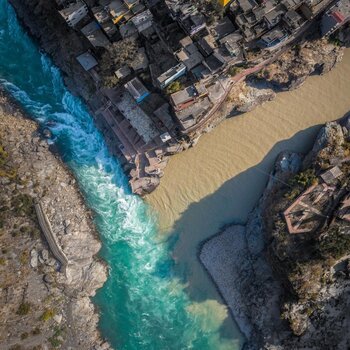
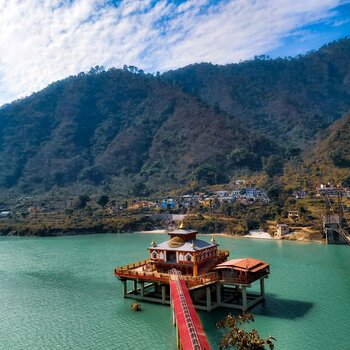
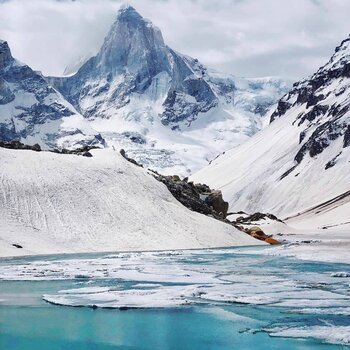
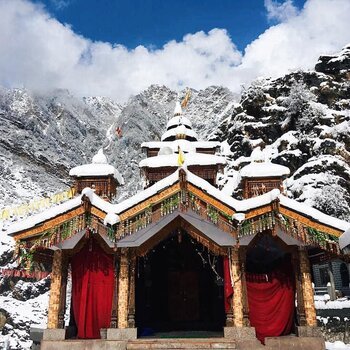
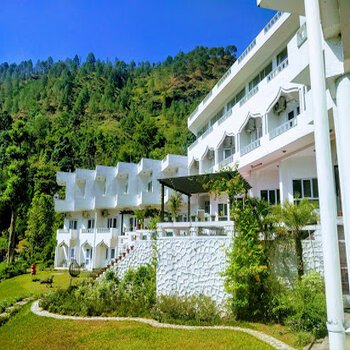
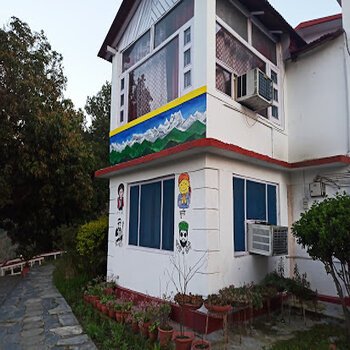
 Enquiry
Enquiry